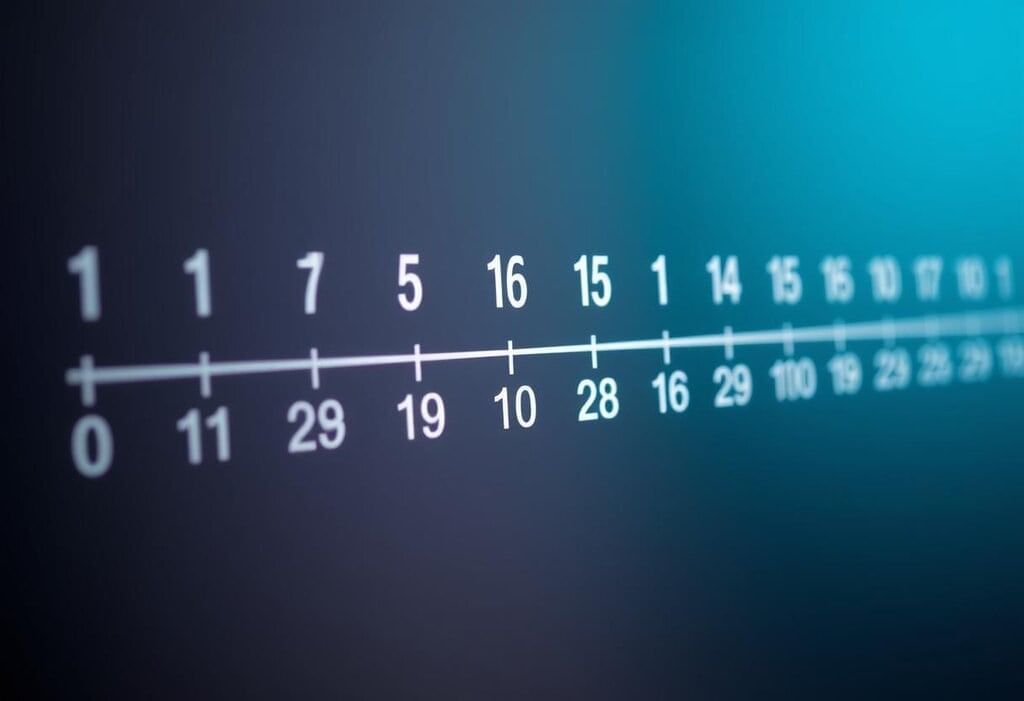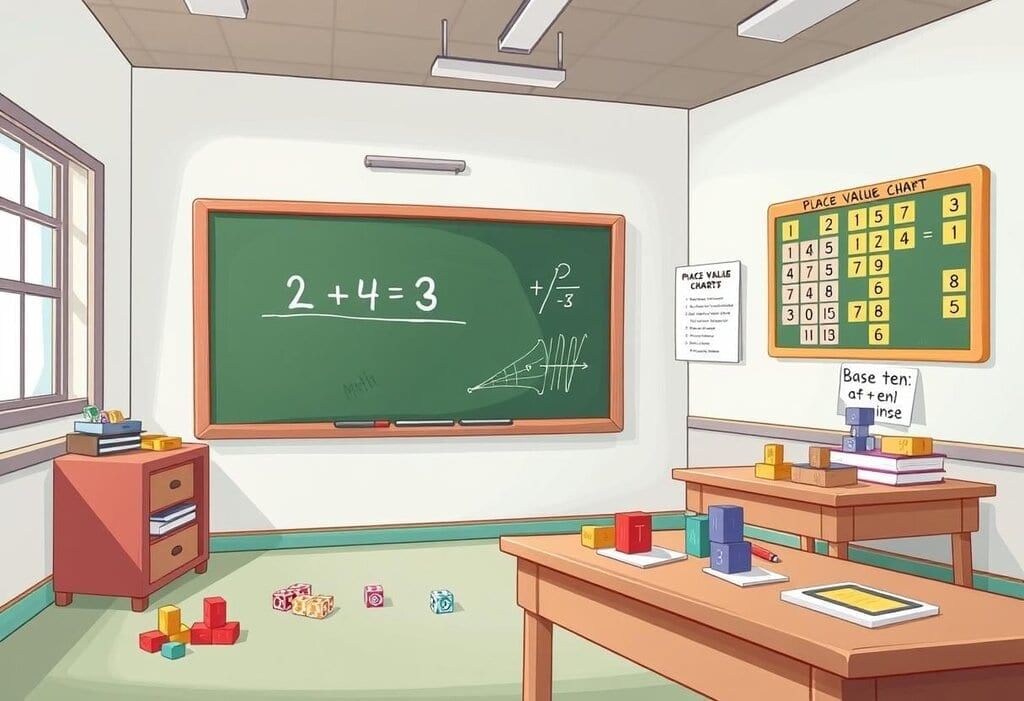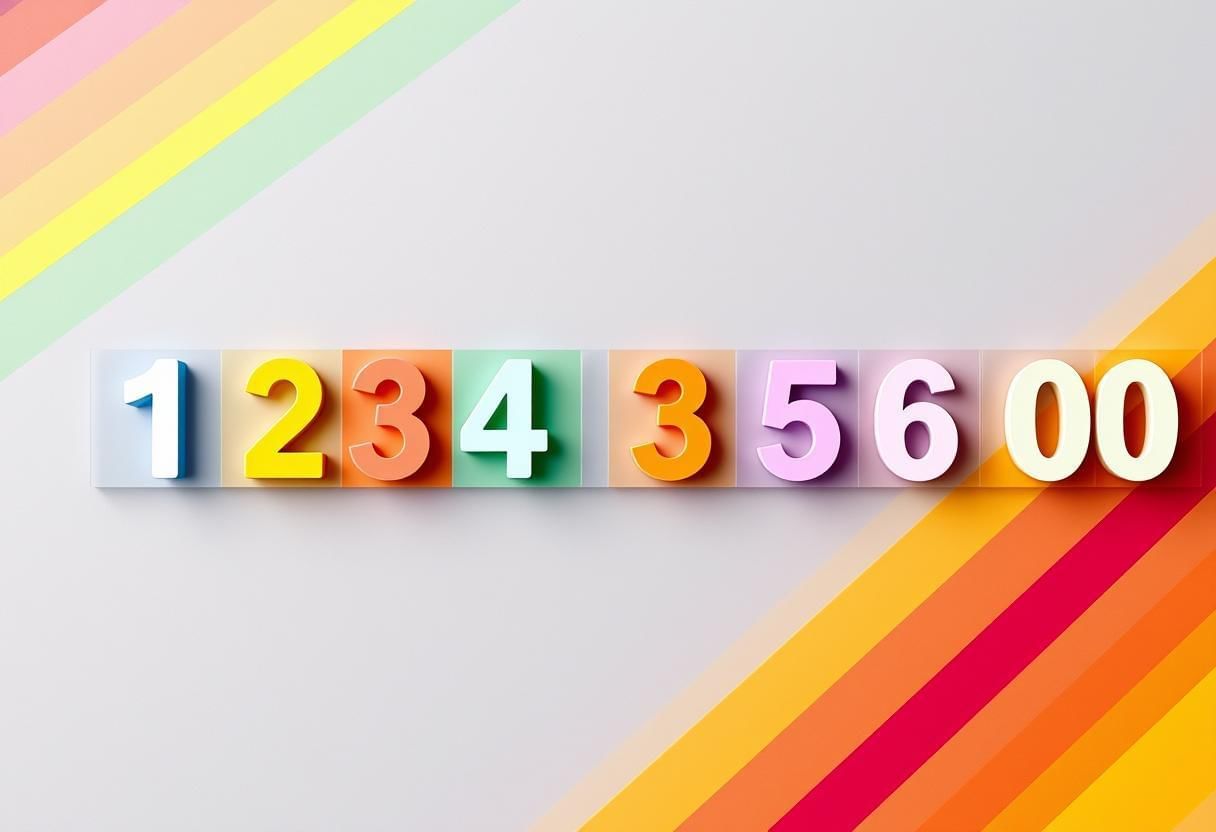Number, Introducing Decimal Numbers Chapter Notes | Year 5 Mathematics IGCSE (Cambridge) - Class 5 PDF Download
| Table of contents |

|
| Introducing Decimal Numbers |

|
| Composing, Decomposing, and Regrouping |

|
| Multiplying and Dividing Whole Numbers by 10, 100, and 1,000 |

|
| Counting On and Back |

|
| Linear Sequences |

|
Introducing Decimal Numbers
 Decimal Visualization
Decimal Visualization- Whole numbers are visible on a number line at positions such as 0, 1, 2, 3, etc.
- Between whole numbers, there are 10 equal parts, each representing one-tenth of the whole.
- Each part is called a tenth, which is 10 times smaller than a whole (ones).
- One-tenth can be written as a fraction: 1/10 or as a decimal: 0.1.
Example: The decimal number 2.6 is read as "two point six."
On a place value chart, 2.6 consists of:
- 2 ones (2 in the ones place).
- 6 tenths (0.6 after the decimal point).
Explanation of 2.6 as 26 tenths:
- 2 ones = 2 × 10 tenths = 20 tenths.
- 6 tenths = 6 tenths.
- Total: 20 tenths + 6 tenths = 26 tenths.
Decimal numbers can be represented using shapes, such as grids or blocks, to show ones and tenths (e.g., 2.6 can be shown as 2 whole units and 6 tenth units).
Reading and writing decimals:
- 4.7: Four point seven.
- 7.4: Seven point four.
- 0.4: Zero point four.
- 4.4: Four point four.
The word "zero" is used to clarify numbers with a 0 in the ones position (e.g., 0.4 is "zero point four").
Composing, Decomposing, and Regrouping
Composing: Building a number using place value parts (e.g., 45,043.4 is composed of 4 ten-thousands, 5 thousands, 0 hundreds, 4 tens, 3 ones, and 4 tenths).
Decomposing: Breaking a number into its place value parts.
Example: 40,000 + 5,000 + 0 + 40 + 3 = 45,043.
Regrouping: Representing a number in different ways using place value parts.
Example for 42.4:
- 42 ones + 4 tenths.
- 42 + 0.4.
- 4 tens + 24 tenths.
Place value chart representation:
- Counters on a place value chart show the number of units in each place (e.g., 2 tens and 5 ones for 25).
Example: 52.5 can be shown with 5 tens, 2 ones, and 5 tenths.
Multiplying and Dividing Whole Numbers by 10, 100, and 1,000
 Mathematical Concepts
Mathematical Concepts- Multiplying by 10 makes a quantity 10 times larger; each digit moves one place to the left.
- Example: 538 × 10 = 5,380.
- Multiplying by 100 makes a quantity 100 times larger; each digit moves two places to the left.
- Example: 472 × 100 = 47,200.
- Multiplying by 1,000 makes a quantity 1,000 times larger; each digit moves three places to the left.
- Example: 472 × 1,000 = 472,000.
- Dividing by 10 makes a quantity 10 times smaller; each digit moves one place to the right.
- Example: 5,380 ÷ 10 = 538.
- Dividing by 100 makes a quantity 100 times smaller; each digit moves two places to the right.
- Example: 47,200 ÷ 100 = 472.
- Dividing by 1,000 makes a quantity 1,000 times smaller; each digit moves three places to the right.
- Example: 472,000 ÷ 1,000 = 472.
Zero plays a crucial role in maintaining the correct place value when digits shift.
Counting On and Back
 Counting Patterns
Counting Patterns- Counting on and back involves moving in equal steps along a number line, thermometer, or array.
- Negative numbers are positioned to the left of zero on a number line (e.g., -27 is read as "negative twenty-seven").
Examples of counting patterns:
- Counting back in tens from a number (e.g., 100, 90, 80, ...).
- Counting on in fives (e.g., 5, 10, 15, ...).
- Counting back in sevens (e.g., 49, 42, 35, ...).
- Counting on in tenths (e.g., 0.1, 0.2, 0.3, ...).
- Counting back in steps of 200 (e.g., 1,000, 800, 600, ...).
- Counting on in steps of 10,000 (e.g., 10,000, 20,000, 30,000, ...).
Linear Sequences
- A linear sequence is a sequence of numbers where the difference between consecutive terms is constant.
- The constant difference is used to find the rule of the sequence.
- Recursion rule: Each term is found by adding the constant difference to the previous term.
- Example: For a sequence with a difference of 8, if the first term is 3, the sequence is 3, 11, 19, 27, ....
|
43 docs|21 tests
|
FAQs on Number, Introducing Decimal Numbers Chapter Notes - Year 5 Mathematics IGCSE (Cambridge) - Class 5
| 1. What are decimal numbers and how are they used in everyday life? |  |
| 2. How do you convert a fraction to a decimal? |  |
| 3. What is the importance of understanding decimal places? |  |
| 4. How do you add and subtract decimal numbers? |  |
| 5. What are some common mistakes made when working with decimal numbers? |  |















